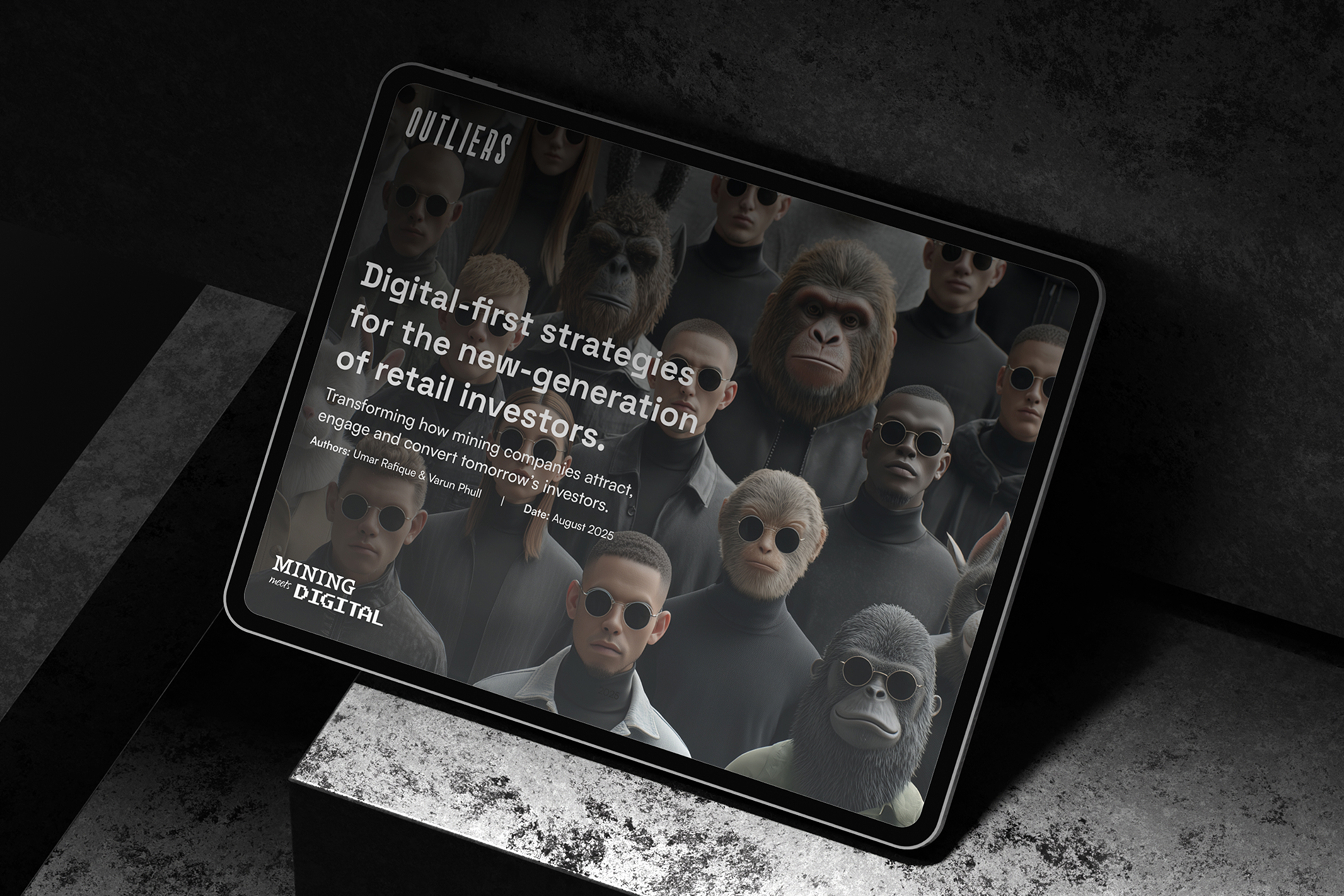For mining executives watching their share price stagnate while gold hits record highs, here's the uncomfortable truth: 73% of Australian Gen Z believe mining does more harm than good. Meanwhile, over 50% of Americans aged 18-29 understand crypto mining terms, but fewer than 20% could describe what your company actually does.
This isn't just a communication problem, it's a valuation crisis. While retail investors pour billions into everything from meme stocks to crypto, mining companies remain conspicuously absent from their portfolios. The supercycle everyone predicted would lift all boats? It's leaving juniors behind, and these six perception barriers explain why.
1. "You're mining Bitcoin?"
Since 2017, cryptocurrency has hijacked the word "mining" in popular culture. For Millennials and Gen Z, who now control over $68 trillion in inherited wealth, mining means digital assets, not physical commodities.
The damage: When retail investors search 'mining investments,' they find crypto content. Your copper project that's essential for EVs? Invisible. Your gold discovery in a tier-one jurisdiction? Buried under Bitcoin mining tutorials. You're not just competing for capital—you're competing for the very definition of your industry.
2. "It's so destructive"
Environmental concerns rank as the number one reason young Canadians avoid mining stocks. The bitter irony? The metals you extract (copper, lithium, cobalt, rare earths) are literally the building blocks of the green transition. Every wind turbine needs 3-5 tonnes of copper. Every EV battery requires 80kg of copper, 20kg of cobalt, and 70kg of lithium.
The damage: While you're enabling renewable energy, retail investors see you as environmental villains. They'll invest in a Tesla manufacturing facility but won't touch the lithium mine that makes it possible. Your ESG improvements, renewable power initiatives, and water recycling programs? Lost in a narrative dominated by historical disasters and artisanal mining footage.
3. "Big ole nuggets!"
Popular media has created a prospector fantasy that bears zero resemblance to modern mining. Reality TV shows feature bearded men pulling fist-sized nuggets from streams. Movies show gold bars stacked in vaults. Instagram shows influencers posing with massive gold specimens.
The damage: Less than 2% of global gold comes from these photogenic placer deposits. When retail investors discover your 'high-grade' discovery means 10 grams per tonne, invisible specks in rock requiring complex processing, they feel deceived. The sophisticated technology, geological expertise, and operational excellence of modern mining? Completely overshadowed by Hollywood fiction.
4. "Modern-Day Slave Labour"
The ILO estimates over 1 million children work in artisanal mining, primarily in small-scale gold and cobalt operations. These images—children in dangerous pits, unsafe working conditions, environmental destruction, dominate mining's media coverage.
The damage: Your ASX or TSX-listed company with rigorous safety standards, fair wages, and community development programs gets painted with the same brush. Australia's mining fatality rate is actually lower than construction (Safe Work Australia, 2023). Your operation might have world-class safety records and comprehensive community benefit agreements, but retail investors can't distinguish between regulated mining and artisanal exploitation.
5. "It's Way Too Technical"
Open any junior miner's presentation and you'll find: cut-off grades, strip ratios, metallurgical recoveries, measured vs. indicated resources, PEA vs. PFS terminology. Mining has created an impenetrable wall of jargon that actively repels retail investors.
The damage: While tech companies simplify AI into "making your life easier" and crypto projects turn blockchain into "digital gold," mining clings to geological vernacular. Your exciting discovery becomes a maze of technical terms. Retail investors, who readily grasp complex DeFi protocols and biotech pipelines when explained simply, bounce off your investor deck within seconds.
6. "Barely Any Liquidity"
Market makers avoid junior miners. Daily volumes remain anemic. Spreads stay wide. One retail investor told us: "I wanted to buy $10,000 worth, but my order would have moved the price 15%." Another: "I couldn't exit my position for three days without taking a massive loss."
The damage: Low liquidity creates a vicious cycle. Retail traders need liquidity to enter and exit positions. Without retail participation, institutional investors also stay away. The result? Your NAV discount widens, your cost of capital increases, and the "gold price should lift all juniors" thesis remains fantasy.
The Hidden Cost of Perception Problems
These aren't just marketing challenges, they're destroying shareholder value:
- Valuation discounts of 40-70% compared to NAV
- Cost of capital 3-5% higher than comparable industries
- Share price correlation to commodity prices breaking down
- Institutional investors avoiding the sector due to lack of retail interest
- M&A activity stalling as buyers can't justify premiums without retail support
The gold price has surged 40% in two years. Bitcoin miners trade at 3-5x revenue. Meanwhile, producing gold miners with proven reserves trade below book value. The disconnect isn't operational, it's perceptual.
The Retail Investment Revolution You're Missing
While you've been focused on institutional roadshows and broker presentations, retail investors have revolutionized capital markets:
- Commissioned $2 trillion in trades in 2021 alone
- Now represent 35% of daily trading volumes (up from 10% in 2019)
- Move markets through social coordination (see GameStop, AMC, Bitcoin)
- Conduct their own research using Reddit, YouTube, and Discord
- Influence institutional flows through momentum creation
They're not waiting for broker recommendations. They're not reading your 43-slide technical presentation. They're making investment decisions based on narratives, communities, and accessible information. And right now, mining isn't even in their consideration set.
Transform or Get Left Behind
The perception barriers facing mining aren't going away on their own. If anything, they're getting worse as younger generations—raised on climate activism and crypto—gain more investment power.
But here's the opportunity: precisely because the bar is so low, the companies that move first to address these perception challenges will capture outsized rewards. The playbook exists. The tools are available. The retail investors are waiting.
The question isn't whether you need to address these perception barriers. It's whether you'll be among the leaders who capture the opportunity, or among the laggards wondering why your stock price keeps declining despite record metal prices.
Ready to Bridge the Perception Gap?
Option 1 - Get immediate access to our comprehensive toolkit and start transforming your retail engagement today: Download the Strategy Pack >
Option 2 - Discuss your specific challenges with our team and develop a customized approach for your company: Book a Strategy Call >
Don't let perception problems continue destroying your valuation. While you wait, your competitors are already moving.
The retail investors are there. The capital is waiting. The only question is whether you'll capture it.


